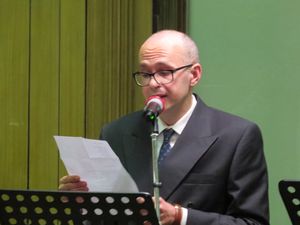The Australian cartoonist Michael Leunig says, “Humans are nervous, touchy creatures and can be easily offended. Many are deeply insecure. They become focused and energized by taking offence; it makes them feel meaningful and alive.” The human disposition is one to be easily rattled. When it comes to the arts, offense is built into the machine: it is a feature, not a bug. What a person gathers from the work itself is some aspect of oneself, usually something hidden from view. “The shadow,” says Jung, “is a moral problem that challenges the whole ego-personality, for no one can become conscious of the shadow without considerable moral effort.” The arts are intended to initiate that effort—the artist is one who never lets the beast sleep.
Why should we keep it awake and fed? German novelist and Nobel laureate Gunter Grass says, “Our minds aren't bound by a chronological corset.” The writer is a particular friend of the beast, having observed and thought deeply. Art transcends time and place to latch onto the importance of living fully. This is why its challenge is pertinent to the powers of human existence. When in doubt, the best method is to harvest one’s homefront.
To cause offense—this is never the intention. To create offense, this is something one must do inevitably. Humans step on one another’s toes. Living in a cosmopolitan “global village” shrinks one’s right to measure offense. The pure bearing of life spans cultures. In the words of William Blake, “All religions are one.” Offense is characteristic of the refusal to do the soul’s work in recognizing the nature of the hurt.
In art one is entitled to interpret.







